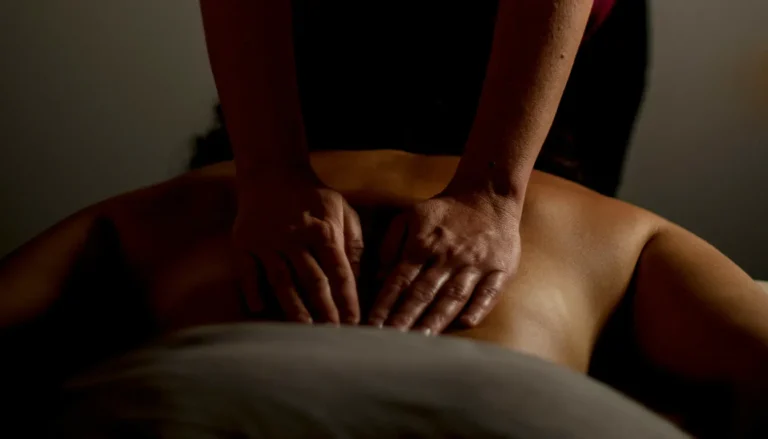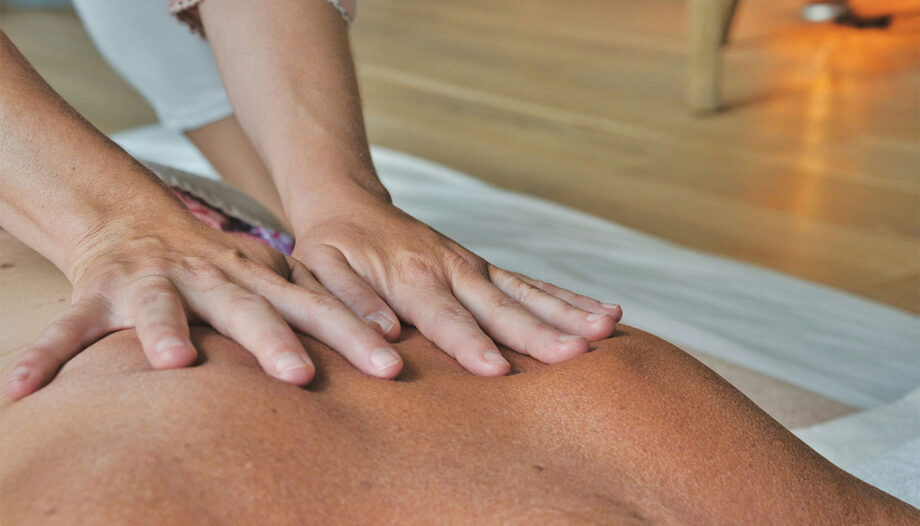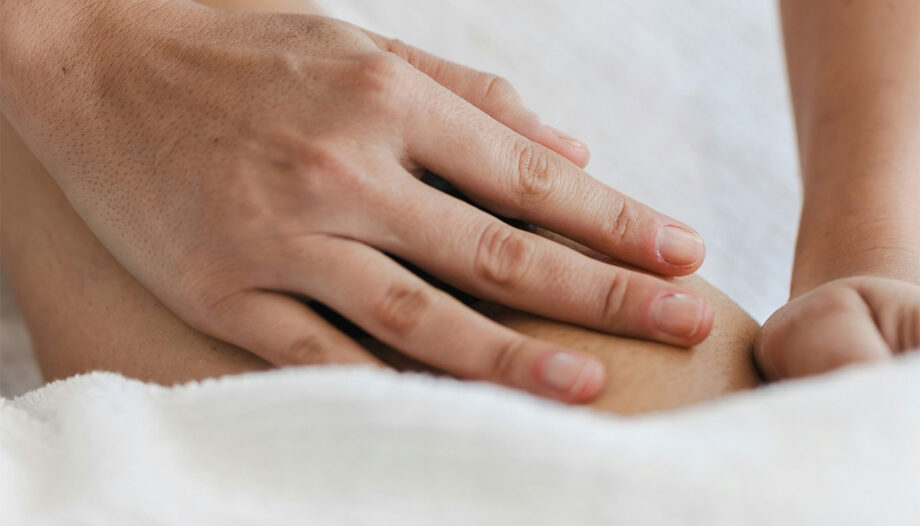Massage therapy is now a big part of health care. Many people see its benefits. A massage therapist uses special techniques on the body’s soft tissues and joints. They help with injuries, ease muscle tension, and improve overall health. With 50 million Americans choosing massage therapy, there’s a high need for skilled therapists1.
Massage does more than just help you relax. It has real benefits for your body and mind. It can lower blood pressure and reduce stress by cutting down cortisol levels. It’s also great for your immune system, helping fight chronic pain and swelling12.
So, what does a massage therapist do? We’ll look into their key duties, the different massages available, and the amazing benefits they offer. This guide gives insights for anyone interested in the profession and those looking to understand what therapists do.
Explore more about the roleand responsibilities of massage therapists here
The Role of a Massage Therapist
Massage therapists have many important tasks. They aim to help clients relax and reduce pain through hands-on treatment. It’s key to understand their duties and how they use different methods to appreciate their work.
Overview of Responsibilities
Massage therapists deal with various duties. They start by figuring out what each client needs. Then, they create a plan that fits those needs and health situations. They need to know about the human body to choose the right techniques. These treatments help with physical issues and also improve relaxation and emotional health.
They work in different places like spas, hospitals, or even travel to where the client is3. They often have flexible schedules to meet the needs of both them and their clients3. They usually bring their own gear, including tables and oils, to make the session special3. The setting they create, with good lighting and atmosphere, is important for helping clients relax3.
Common Techniques Used by Massage Therapists
Massage therapists use many methods to help their clients. They might do a Swedish massage for relaxation or a deep tissue massage to loosen up tight muscles. For athletes, there’s sports massage to avoid injuries and boost performance.
They also know about shiatsu, Thai, and prenatal massage among others. Many therapists take extra courses to get better at specific types of massage4. This training can take up to a year, and they get certificates at the end4. In many places, they also need a license to work. This makes sure clients get help from qualified people4.
| Massage Therapy Type | Focus Area | Primary Techniques |
|---|---|---|
| Swedish Massage | General Relaxation | Long, gliding strokes |
| Deep Tissue Massage | Tension Relief | Applied pressure on deeper muscle layers |
| Sports Massage | Athlete Performance | Stretching and compression techniques |
| Prenatal Massage | Pregnancy Support | Modified strokes for comfort |
| Shiatsu | Energy Flow | Finger pressure on specific points |
These techniques show the wide range of skills massage therapists have. They play a big part in improving their clients’ well-being.
Different Types of Massage Therapy
Massage therapy includes many techniques to help relax, ease pain, and boost health. Each technique has special goals, fitting the client’s needs. We will look into some popular massage types, noting their key features and advantages.
Swedish Massage
Swedish massage is known for its relaxing impact. It uses gentle strokes and kneading to ease tension and improve blood flow. A typical session is 60 to 90 minutes long5.
Deep Tissue Massage
Deep tissue massage goes into the muscle and connective tissue layers. It uses slow strokes and firm pressure to help with long-term pain and stiffness. Each session can last from 60 to 90 minutes, focusing carefully on specific areas5.
Sports Massage
Sports massage is tailored for athletes, aiding in their performance and recovery. It can include gentle stretching or precise pressure and lasts 30 to 90 minutes. It helps increase flexibility and lowers injury chances6.
Trigger Point Therapy
Trigger point therapy targets tense muscle knots to boost blood flow and lessen pain. It focuses on particular pain points, helping to ease long-term discomfort. A session is usually 60 to 90 minutes, covering several trigger points7.
Chair Massage
Chair massage, often seen in public places, offers quick relief for stress. It focusses on the upper body with the client sitting down. Sessions are about 30 minutes, making it a quick and effective massage choice6.
Benefits of Massage Therapy
Massage therapy offers a range of benefits that go beyond just relaxing. It helps improve both your body and mind. This makes it an important part of complete care.
Physical Benefits
One of the main physical health benefits of massage is easing muscle tightness and pain. It improves blood flow and makes you more flexible. This helps the body heal from injuries. Athletes use massage to boost performance and lower injury chances.
Mental Health Benefits
Massage therapy also helps your mental health. It reduces stress, anxiety, and feelings of sadness. About 75% of people get massages for these reasons8. It releases happy chemicals in the brain, lifting your mood. For more on massage and mental health, visit this link.
Long-term Health Effects
The long-term effects of massage include a stronger immune system and less chronic pain. Studies show it’s good for fibromyalgia and arthritis, improving life quality9. Regular massages offer many lasting benefits.
Becoming a Massage Therapist
Starting a career in massage therapy means learning about the training and certification needed. It also involves exploring job chances in this growing area. The deep training ensures therapists learn key skills for effective treatments.
Training and Certification Requirements
To become a massage therapist, one usually takes a 6 to 12-month course for a certificate. Or, they might study for about 2 years for an associate degree. In the U.S., you must finish a certain number of training hours and pass exams like the MBLEx to work legally.
There are over 245 approved schools for massage therapy, offering knowledge in biology, practical techniques, and hands-on experience. While rules differ by state, every place is making sure therapists can take good care of their clients1011.
Career Opportunities and Job Security
Massage therapy jobs are growing, with openings in spas, wellness centres, clinics, and hospitals. This growth shows strong demand in the field. The U.S. Bureau of Labor Statistics expects massage therapy jobs to grow by 21% from 2019 to 2029. This is because more people see massage as a way to ease stress and pain.
The therapy world is also changing, with more team-up between therapists and other health workers. This opens up more career paths. Therapists should keep learning new skills to earn more and do their job better.
Conclusion
Massage therapy plays a crucial role in improving both body and mind health. It uses various methods, like Swedish and deep tissue massage, to relieve muscle tension and boost relaxation. Techniques such as rhythmic rocking and guided meditation ensure each session is special, meeting the unique needs of every client. Plus, special treats like a scalp massage make the experience even more personal, showing the value of tailoring treatments12.
Becoming a massage therapist isn’t just about mastering techniques. It’s also about building strong relationships with clients and seeing how therapy changes their lives. With the growing understanding of massage therapy as a true healthcare option, the career prospects for therapists look really good. They not only help people feel better but also enjoy a stable and rewarding career in a booming field13.
The future for massage therapists is very promising. More and more people are starting to see how massage can improve their health and happiness. This means therapists have even more chances to use their skills to make a difference in people’s lives. The job offers a chance to have a meaningful career that keeps getting better.
FAQ
What qualifications do I need to become a massage therapist?
To be a massage therapist, you need to finish a recognised training course. This should cover both theory and practice. You’ll likely need to pass exams like the MBLEx. Plus, you must get a license from your state.
How often should I receive a massage to reap the benefits?
How often you need a massage depends on you. For the best health, many suggest getting one weekly or every other week. Yet, your health, lifestyle, and stress can change how often you should go.
What types of conditions can massage therapy help with?
Massage can help with many issues. This includes chronic pain, stress, tight muscles, sports injuries, and anxiety. It can also boost blood flow and help your body move better. Many use it along with other health care treatments.
Are there any risks associated with massage therapy?
Massage is mostly safe for everyone. But, those with broken bones, very weak bones, or skin problems should be careful. Always talk to a doctor before you start, especially if you have health problems.
Can I become a massage therapist online?
You can take some massage therapy courses online. But, learning how to massage properly needs practice in real life. Look for courses that mix online study with real-world practice. This helps you learn everything properly.
How does massage therapy contribute to mental health?
Massage lowers stress and anxiety and makes you feel happier. It helps your body release good chemicals like serotonin and dopamine. This helps you feel mentally well.








